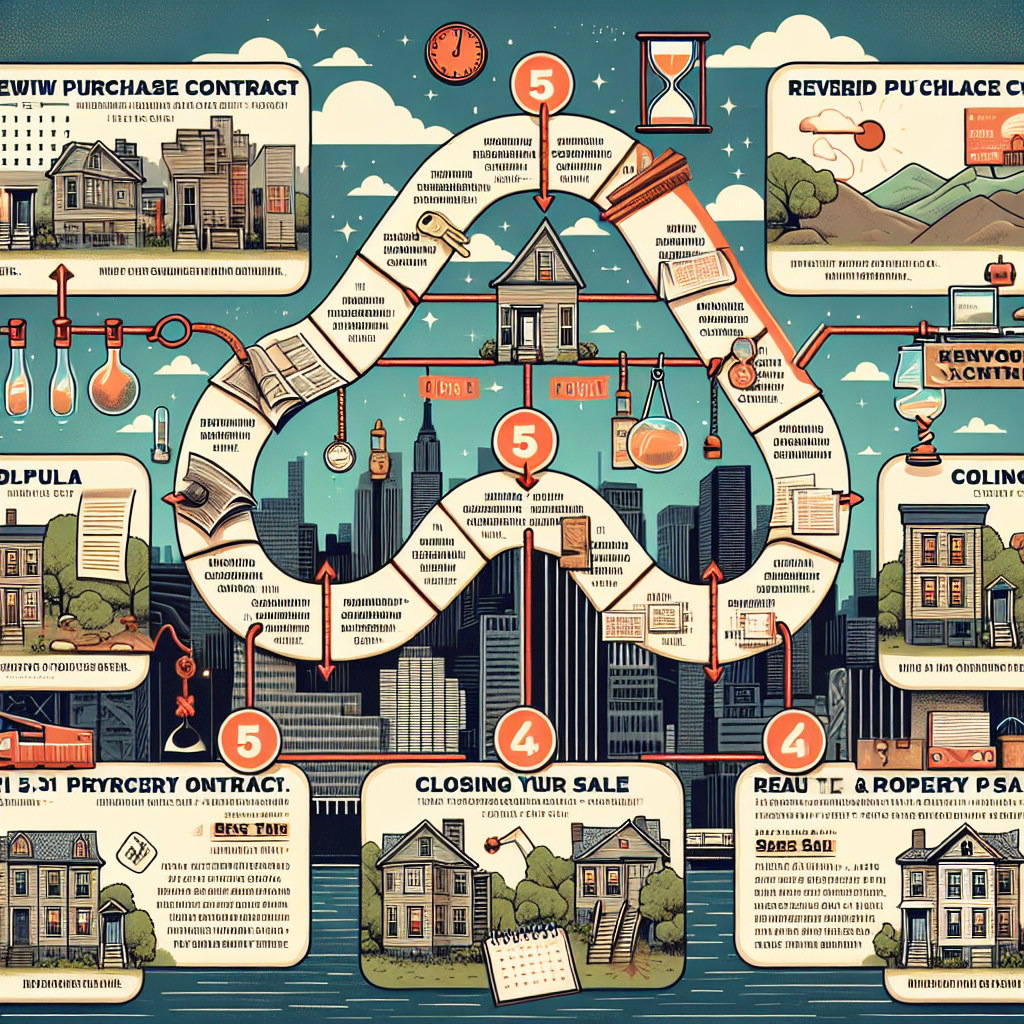-
Table of Contents
- Navigating the Fifth Month of My Brooklyn Condo Sale and 1031 Exchange Journey
- Understanding the 1031 Exchange
- Key Benefits of a 1031 Exchange
- The Brooklyn Condo Market: A Snapshot
- Market Trends and Statistics
- My Journey: Selling the Brooklyn Condo
- Month 1: Preparing the Property
- Month 2: Listing and Marketing
- Month 3: Showings and Negotiations
- Month 4: Accepting an Offer and Due Diligence
- Month 5: Closing the Sale
- Navigating the 1031 Exchange Process
- Identifying Replacement Properties
- Due Diligence and Financing
- Closing the Exchange
- Case Studies: Successful 1031 Exchanges
- Case Study 1: Upgrading to a Commercial Property
- Case Study 2: Diversifying Across Multiple Properties
- Challenges and Lessons Learned
- Challenges Faced
- Lessons Learned
- Conclusion
Navigating the Fifth Month of My Brooklyn Condo Sale and 1031 Exchange Journey

Embarking on the journey of selling a property and engaging in a 1031 exchange can be both exhilarating and daunting. As I find myself in the fifth month of selling my Brooklyn condo and navigating the complexities of a 1031 exchange, I have gathered a wealth of insights and experiences that I believe can be valuable to others in similar situations. This article aims to provide a comprehensive guide to understanding the intricacies of this process, supported by real-life examples, case studies, and relevant statistics.
Understanding the 1031 Exchange
The 1031 exchange, named after Section 1031 of the Internal Revenue Code, allows investors to defer capital gains taxes on the sale of an investment property by reinvesting the proceeds into a like-kind property. This tax-deferral strategy is particularly beneficial for real estate investors looking to grow their portfolios without the immediate tax burden.
Key Benefits of a 1031 Exchange
- Tax Deferral: By deferring capital gains taxes, investors can reinvest the full amount of their proceeds into a new property.
- Portfolio Diversification: Investors can use a 1031 exchange to diversify their real estate holdings by acquiring different types of properties.
- Increased Cash Flow: Reinvesting in properties with higher rental income potential can enhance cash flow.
- Estate Planning: A 1031 exchange can be a strategic tool for estate planning, allowing investors to pass on properties to heirs with a stepped-up basis.
The Brooklyn Condo Market: A Snapshot
Brooklyn’s real estate market has been dynamic, with fluctuating trends influenced by various factors such as economic conditions, interest rates, and buyer preferences. As of 2023, the Brooklyn condo market has shown resilience, with steady demand and moderate price appreciation.
Market Trends and Statistics
- Median Sale Price: The median sale price for condos in Brooklyn has seen a year-over-year increase of approximately 5%, reaching around $850,000.
- Days on Market: The average days on market for condos in Brooklyn is approximately 60 days, indicating a relatively balanced market.
- Inventory Levels: Inventory levels have remained stable, with a slight increase in new listings compared to the previous year.
My Journey: Selling the Brooklyn Condo
Selling a property in Brooklyn requires careful planning, strategic marketing, and a deep understanding of the local market. Here is a detailed account of my journey over the past five months.
Month 1: Preparing the Property
The first step in selling my Brooklyn condo was to prepare the property for listing. This involved:
- Decluttering and Staging: Removing personal items and staging the condo to highlight its best features.
- Repairs and Upgrades: Addressing any necessary repairs and making minor upgrades to enhance the property’s appeal.
- Professional Photography: Hiring a professional photographer to capture high-quality images for the listing.
Month 2: Listing and Marketing
With the property ready, the next step was to list and market the condo. Key activities included:
- Choosing a Real Estate Agent: Selecting an experienced real estate agent with a strong track record in the Brooklyn market.
- Creating a Compelling Listing: Crafting a detailed and engaging listing description to attract potential buyers.
- Utilizing Multiple Platforms: Listing the property on various real estate platforms and leveraging social media for wider reach.
Month 3: Showings and Negotiations
Once the condo was listed, the focus shifted to showings and negotiations. This phase involved:
- Hosting Open Houses: Organizing open houses to showcase the property to multiple potential buyers.
- Private Showings: Scheduling private showings for interested buyers who preferred a more personalized experience.
- Handling Offers: Reviewing and negotiating offers to secure the best possible deal.
Month 4: Accepting an Offer and Due Diligence
After receiving multiple offers, I accepted the most favorable one. The due diligence phase included:
- Buyer Inspections: Allowing the buyer to conduct inspections and address any concerns that arose.
- Appraisal: Ensuring the property appraised at or above the agreed-upon sale price.
- Finalizing Contracts: Working with my real estate agent and attorney to finalize the sale contracts.
Month 5: Closing the Sale
The final month focused on closing the sale and preparing for the 1031 exchange. Key steps included:
- Coordinating with the Title Company: Ensuring all necessary documents were prepared and submitted for the closing.
- Transferring Ownership: Completing the transfer of ownership and receiving the sale proceeds.
- Identifying Replacement Properties: Beginning the search for suitable replacement properties for the 1031 exchange.
Navigating the 1031 Exchange Process
With the sale of my Brooklyn condo complete, the focus shifted to executing the 1031 exchange. This process involves several critical steps and strict timelines.
Identifying Replacement Properties
The first step in a 1031 exchange is to identify potential replacement properties. The IRS requires that investors identify up to three properties within 45 days of the sale. To ensure compliance, I:
- Conducted Market Research: Analyzed various markets to identify potential investment opportunities.
- Engaged a Qualified Intermediary: Worked with a qualified intermediary to facilitate the exchange and ensure adherence to IRS regulations.
- Visited Properties: Conducted site visits to evaluate the condition and potential of each property.
Due Diligence and Financing
Once the replacement properties were identified, the next steps involved due diligence and securing financing. This phase included:
- Property Inspections: Conducting thorough inspections to assess the condition and identify any potential issues.
- Financial Analysis: Evaluating the financial performance and potential return on investment for each property.
- Securing Financing: Working with lenders to secure financing for the replacement properties.
Closing the Exchange
The final step in the 1031 exchange process is to close on the replacement properties within 180 days of the sale. This involved:
- Coordinating with the Qualified Intermediary: Ensuring all necessary documents were prepared and submitted for the exchange.
- Finalizing Purchase Agreements: Working with my real estate agent and attorney to finalize the purchase agreements for the replacement properties.
- Completing the Exchange: Successfully closing on the replacement properties and completing the 1031 exchange.
Case Studies: Successful 1031 Exchanges
To provide further insights, here are two case studies of successful 1031 exchanges that highlight different strategies and outcomes.
Case Study 1: Upgrading to a Commercial Property
John, a real estate investor, sold his residential rental property in Brooklyn for $1.2 million. He used a 1031 exchange to upgrade to a commercial property in Manhattan valued at $2 million. By leveraging the tax deferral benefits of the 1031 exchange, John was able to reinvest the full proceeds from the sale and secure a property with higher rental income potential. This strategic move not only increased his cash flow but also diversified his investment portfolio.
Case Study 2: Diversifying Across Multiple Properties
Susan, another investor, sold her Brooklyn condo for $900,000. Instead of reinvesting in a single property, she used a 1031 exchange to acquire three smaller rental properties in different locations, each valued at $300,000. This approach allowed Susan to diversify her investments and reduce risk. Additionally, the combined rental income from the three properties exceeded the income generated by her original condo, enhancing her overall cash flow.
Challenges and Lessons Learned
Throughout this journey, I encountered several challenges and learned valuable lessons that can benefit others considering a similar path.
Challenges Faced
- Market Fluctuations: Navigating market fluctuations and timing the sale to maximize returns.
- Strict Timelines: Adhering to the strict timelines imposed by the IRS for identifying and closing on replacement properties.
- Due Diligence: Conducting thorough due diligence to ensure the replacement properties met investment criteria.
Lessons Learned
- Plan Ahead: Start planning early and engage professionals such as real estate agents, attorneys, and qualified intermediaries to guide you through the process.
- Stay Informed: Stay informed about market trends and regulations to make informed decisions.
- Be Flexible: Be open to exploring different markets and property types to identify the best investment opportunities.
Conclusion
Navigating the fifth month of my Brooklyn condo sale and 1031 exchange journey has been a transformative experience. From preparing the property for sale to identifying and closing on replacement properties, each step has provided valuable insights and lessons. The 1031 exchange has proven to be a powerful tool for deferring taxes, diversifying investments, and enhancing cash flow. By sharing my journey, I hope to provide a roadmap for others embarking on similar paths and inspire confidence in navigating the complexities of real estate transactions and tax-deferral strategies.
In summary, the key takeaways from this journey include the importance of thorough planning, staying informed about market trends, and leveraging professional expertise. With careful execution and strategic decision-making, a 1031 exchange can unlock significant benefits and opportunities for real estate investors.








